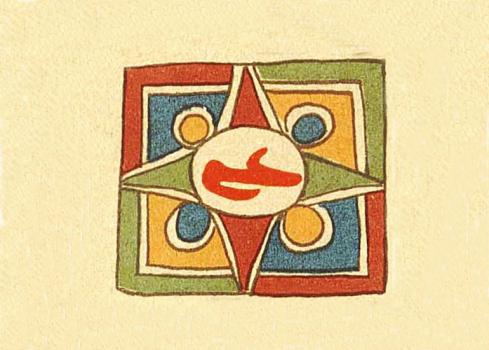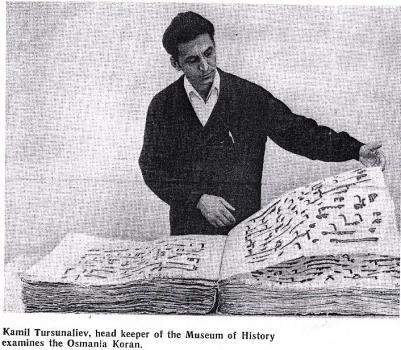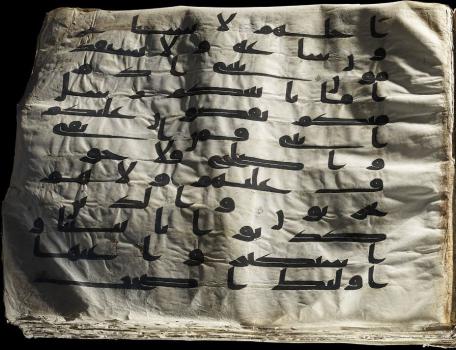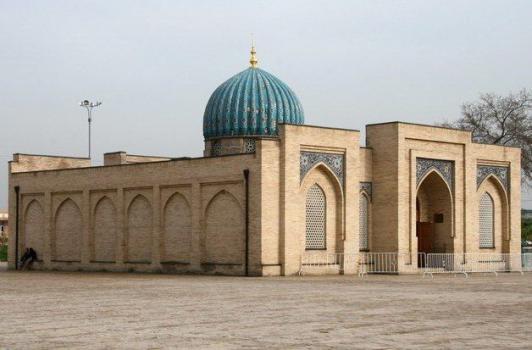Samarkand Quran

O. Vasilyeva
Withdrawal from the Library and Further History
In December 1917, two months after the October Revolution, the government of Soviet Russia granted the request of the Petrograd Muslim Congress to pass on the "Holy Quran of Uthman" from the State Public Library to the Congress. On December 29, by order of the People's Commissar for Education Anatoly Lunacharsky, dated the same day, the Quran was removed from our library to the premises of the Executive Committee of the All-Russian Muslim Council. In January 1918, the Quran was delivered by train to Ufa.
In 1924, the Samarkand Quran was transported to Tashkent, from there to the Khwaja Akhar Mausoleum in Samarkand. From 1941, it was held in the Museum of the History of the Peoples of Uzbekistan. At the turn of the 1980s – 1990s, for the second time in the 20th century, again the question arose about transferring the holy relic to believers. This issue was put to rest with independence of Uzbekistan: in 1989, Muslims were ablle to get back the Samarkand Quran that is today housed in the Mui-i Muborak Madrasa on the territory of the Khazrati Imam Complex in Tashkent. Everyone can see there both the original exhibited under proper conditions and its facsimile edition, as well as many other rare manuscripts, including parchment folios from the famous early Katalangar Quran.
But there is still debate about how to integrate the scientific dating of the Samarkand Quran to the 2nd century AH (8th cent. AD) with the belief in the authenticity of the blood of Uthman? Is it necessary to integrate science and faith? Over the centuries, the ancient Samarkand Quran was associated with so many beautiful legends, so many dramatic events, so many famous and unknown people that it has undoubtedly become a true shrine worthy of reverent veneration by believers.




